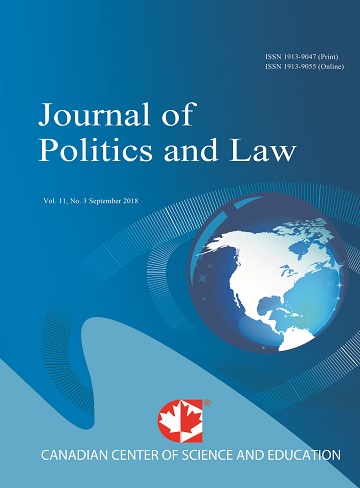General Legal Limits of the Application of the Lethal Autonomous Weapons Systems within the Purview of International Humanitarian Law
- Roman Dremliuga
Abstract
This article focuses on the problem of regulation of the application of the autonomous weapons systems from the perspective of the norms and principles of international humanitarian law. The article discusses the question of what restrictions are imposed on the application of such weapons in the international humanitarian law. The article presents a number of principles that must be met by both the weapons and their method of their application: distinction between civilians and combatants, military necessity, proportionality, prohibition on causing unnecessary suffering, and humanity.
The author concludes that from the perspective of the principles of the international humanitarian law, it is doubtful if autonomous systems would be able to comply with these principles. Weapons that hit targets without human intervention have been applied for a long time, but they have never had the independence that they have now. The issue of compliance of autonomous weapons systems with the international humanitarian law can be considered if sufficient experience of application of such weapons in real conditions is accumulated.
This study demonstrates that it is impossible to say that autonomous weapons systems do not comply with the principles of humanitarian law in general. The paper provides policy recommendations and assessments for each of the principles under consideration. The author also concludes that it would be necessary not to prohibit autonomous weapons, because they do not comply with the principles of international humanitarian law, but to develop rules for their application and for human participation in their functioning. A significant challenge to the development of such rules is the opacity of these autonomous weapons systems, if we look at them as at the complex intelligent computer systems.
- Full Text:
 PDF
PDF
- DOI:10.5539/jpl.v13n2p115
Journal Metrics
h-index (2017): 14
i10-index (2017): 39
h5-index (2017): 9
h5-median (2017): 11
Index
- Academic Journals Database
- ACNP
- ANVUR (Italian National Agency for the Evaluation of Universities and Research Institutes)
- Berkeley Library
- CNKI Scholar
- COPAC
- CrossRef
- DTU Library
- EBSCOhost
- Elektronische Zeitschriftenbibliothek (EZB)
- EuroPub Database
- Excellence in Research for Australia (ERA)
- Genamics JournalSeek
- GETIT@YALE (Yale University Library)
- Ghent University Library
- Google Scholar
- Harvard Library
- HeinOnline
- INDEX ISLAMICUS
- Infotrieve
- Jisc Library Hub Discover
- JournalGuide
- JournalTOCs
- LOCKSS
- MIAR
- Mir@bel
- NewJour
- Norwegian Centre for Research Data (NSD)
- Open J-Gate
- PKP Open Archives Harvester
- Publons
- Pubmed journal list
- RePEc
- ROAD
- Scilit
- SHERPA/RoMEO
- Standard Periodical Directory
- Stanford Libraries
- UCR Library
- Ulrich's
- UniCat
- Universe Digital Library
- UoS Library
- WorldCat
- Zeitschriften Daten Bank (ZDB)
Contact
- William TaiEditorial Assistant
- jpl@ccsenet.org
